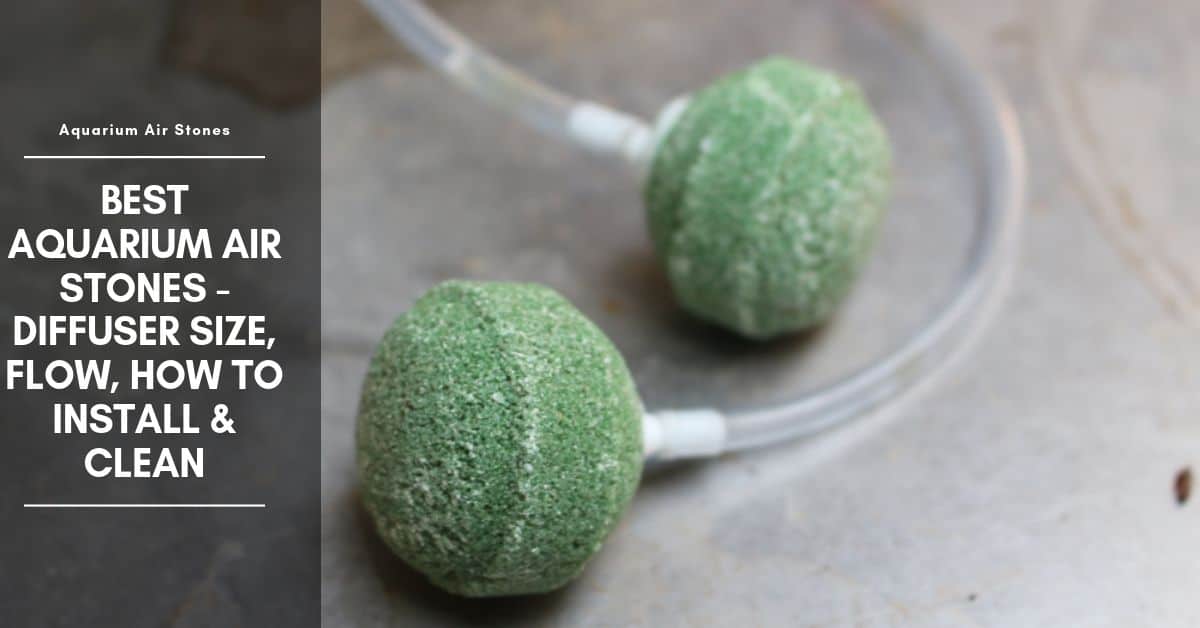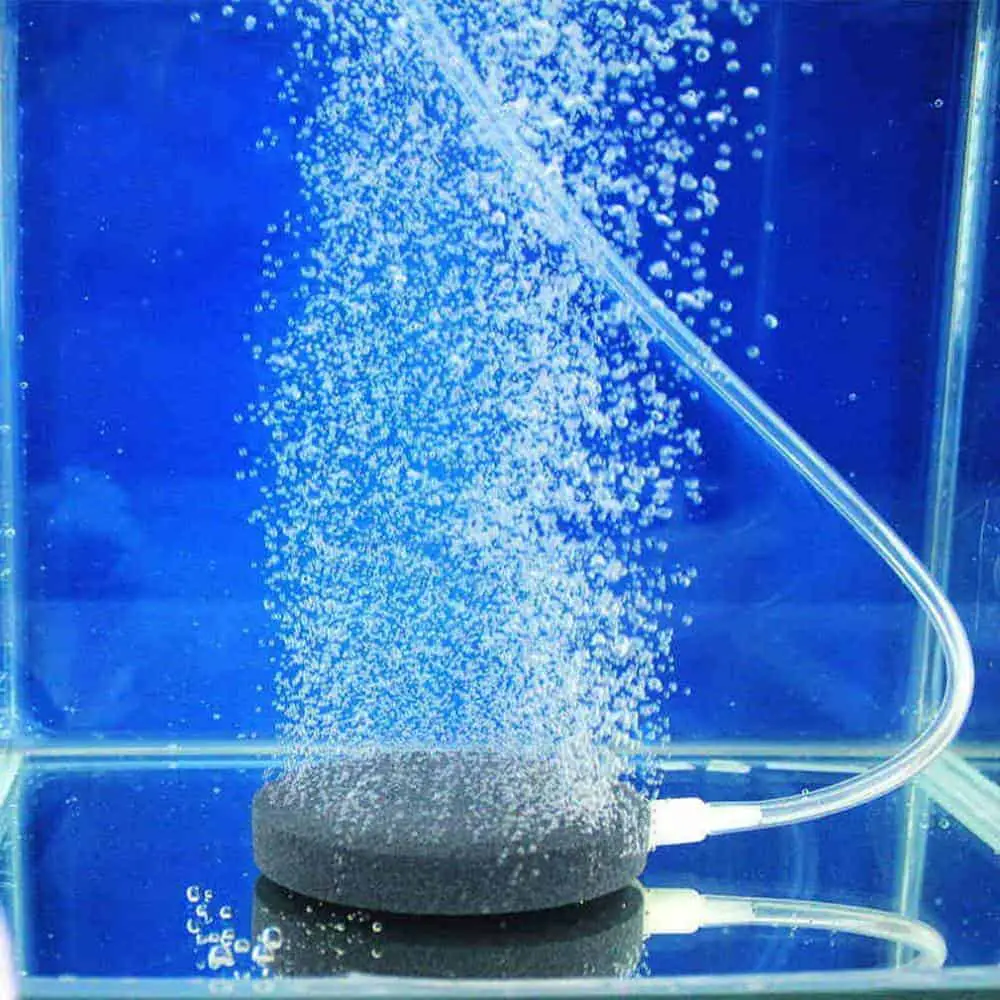
Why is an air stone beneficial in the aquarium?
In general terms, air pumps and air stones are used to put air or dissolved oxygen into your aquarium water.
Another reason for an aquarium air stone to be useful is actually to provide a bit of water current. Filters aren’t always strong enough to completely push the water around and completely move all of the dirt and debris from the bottom of the tank.
Why aquarium air stones necessary?
No, you don’t always need it. If you live in an area that has a relatively cool air temperature, then there usually is enough oxygen dissolved into your water just through the process of your filter moving the water around, to actually dissolve into the water from the atmosphere, and your fish are generally going to be fine.
However, in situations where the water is very warm, that means fewer options in there you don’t have a very strong filter in the case of fish that don’t like a lot of strong currents but need the oxygen then you need to supplement that with an air filter.
Air pumps are also used for decoration, a lot of the time air pumps attached to an air stone. However, you can get quite a nice addition to an aquarium. You can even get ones that are lit up and provide an air curtain of color, so they’re actually quite a nice addition to an aquarium.
Sometimes you need a little bit of extra help with that. What air stones will do is they will bubble up from the bottom to the top. Thus drawing with it, any dirt and circulating the water and it kind of convection current from the bottom to the top but it will sink back down.
API STRESS COAT Aquarium Water Conditioner 16-Ounce Bottle
Tetra AquaSafe Plus, 8.45 Ounces, aquarium Water Conditioner And Dechlorinator, Model Number: 46798162681
$10.19 (as of December 24, 2025 11:53 GMT +03:00 - More infoProduct prices and availability are accurate as of the date/time indicated and are subject to change. Any price and availability information displayed on [relevant Amazon Site(s), as applicable] at the time of purchase will apply to the purchase of this product.)API TAP WATER CONDITIONER Aquarium Water Conditioner 16-Ounce Bottle
$8.48 (as of December 24, 2025 11:53 GMT +03:00 - More infoProduct prices and availability are accurate as of the date/time indicated and are subject to change. Any price and availability information displayed on [relevant Amazon Site(s), as applicable] at the time of purchase will apply to the purchase of this product.) So it useful for clearing any dead spots, that you’ve got in your aquarium.
The actual question though is do you need an air pump, the answer is not really. You don’t need an air pump, as long as you’ve got a decent filter and after moving on the surface of your water, then that should suffice.
Best Aquarium Air Stone
1. Pawfly 4″ Air Stone Bar Bubble Diffuser
These air stones are my favorite. They have a lot of bubbles and are bit heavy, so they not move around if you don’t connect the suction cup. Be sure to have a strong enough air pump and do soak them in water for some time.
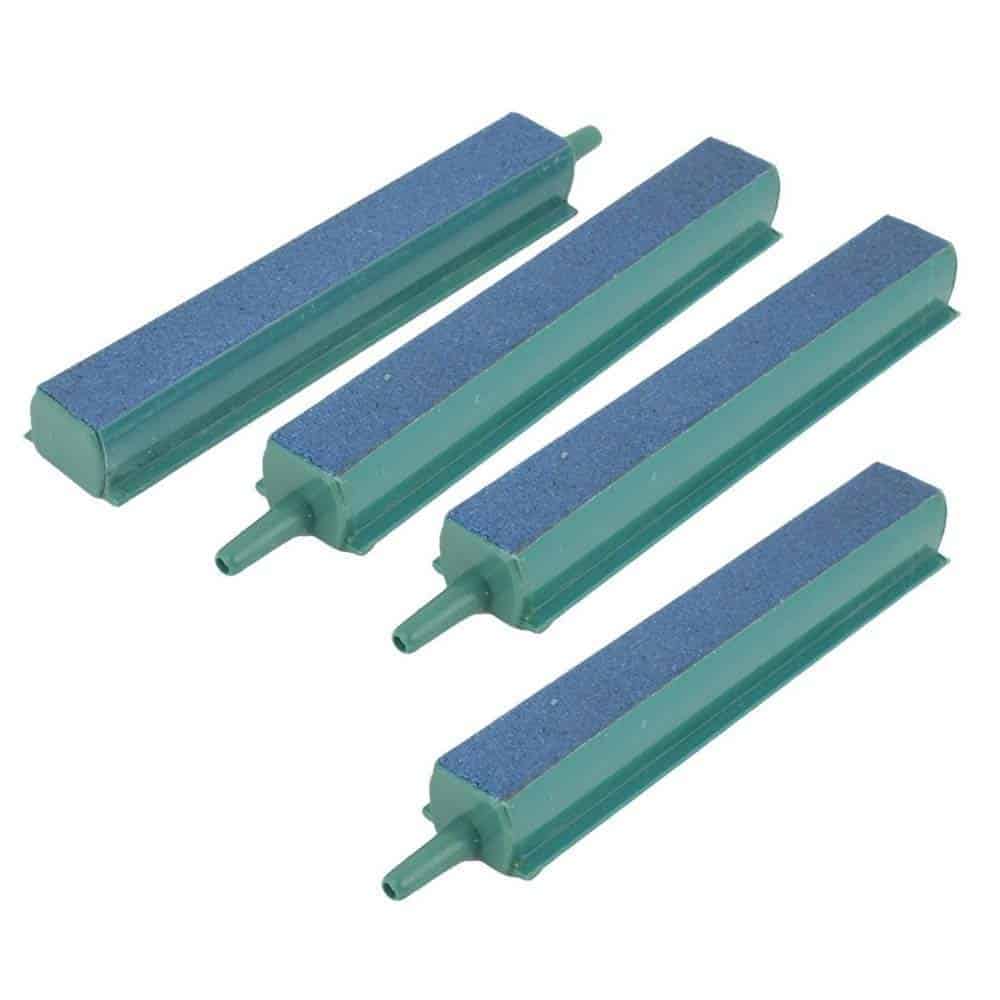
Diffuser Details:
Dimension: about 4.5″ x 0.8″ x 0.5″ / 11.4 x 2 x 1.3cm (L*W*T). Fits to 0.16″ / 4mm inner diameter tube. Flow volume: 1.3 L/min.
2. Pawfly 1.6″ Ceramic Airstones Diffuser
Another great option from Pawfly, this air stone makes even amount of bubbles all through, generates the smallest bubbles that I’ve seen. Smaller bubbles which increase the surface area and add more effective aeration.
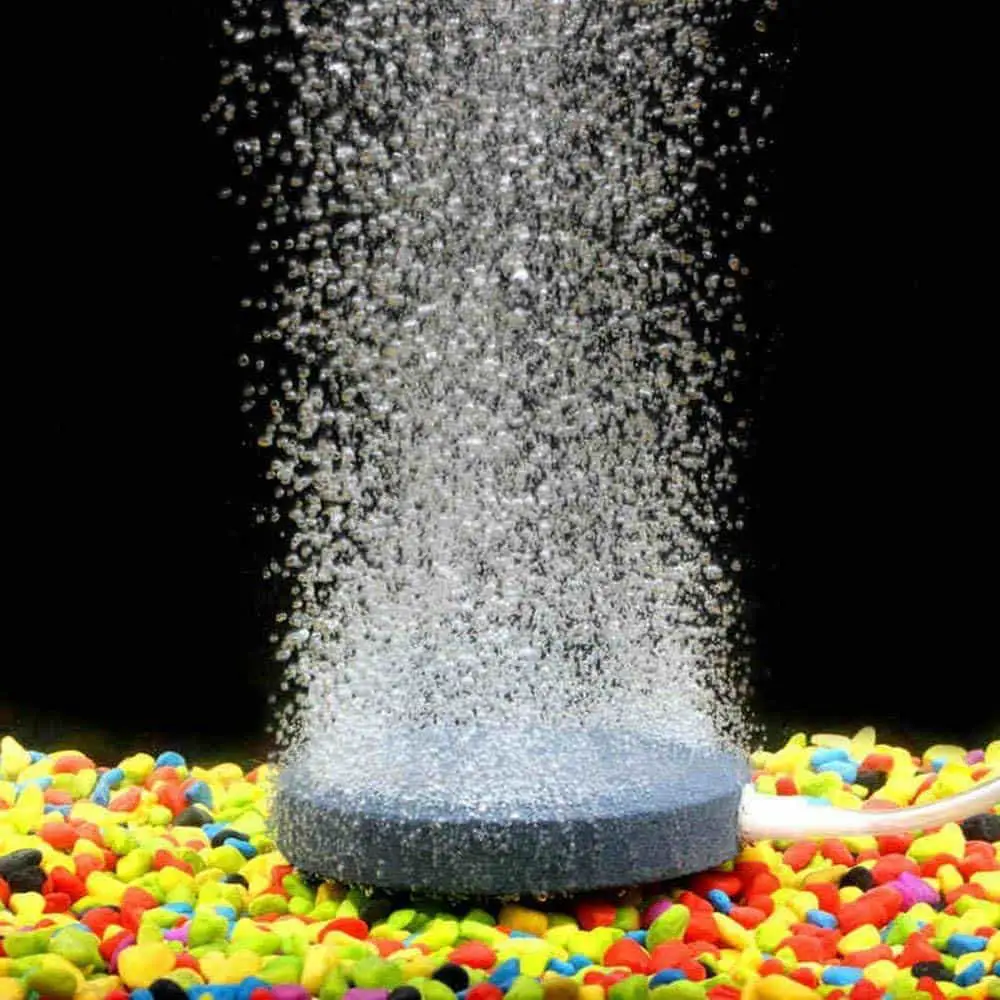
Diffuser Details:
Dimension: 1.6″ x 0.6″ / 4cm x 1.5cm (D x H). Fits to 0.16″ / 4mm inner diameter tube. Flow volume: 2 L/min.
3. Hygger Aquarium Air Stone Kit
The air stone was bigger and heavy than I anticipated and it appears to be like its good quality. The base of the air stone is very heavy and it’s not simply moved by the fish or Invertebrates. I immerse it in water for more than the 2 hours of instructions and connect it to the air pump.
Please note, you will need to connect it to its own pump and can’t be shared with another airline. Once I switched it on, it worked very well. The air stone generated a lot of microbubbles and I was quite happy with its operation. It created a lot of flow in the water as well, and it moves dirt and debris all over the tank.
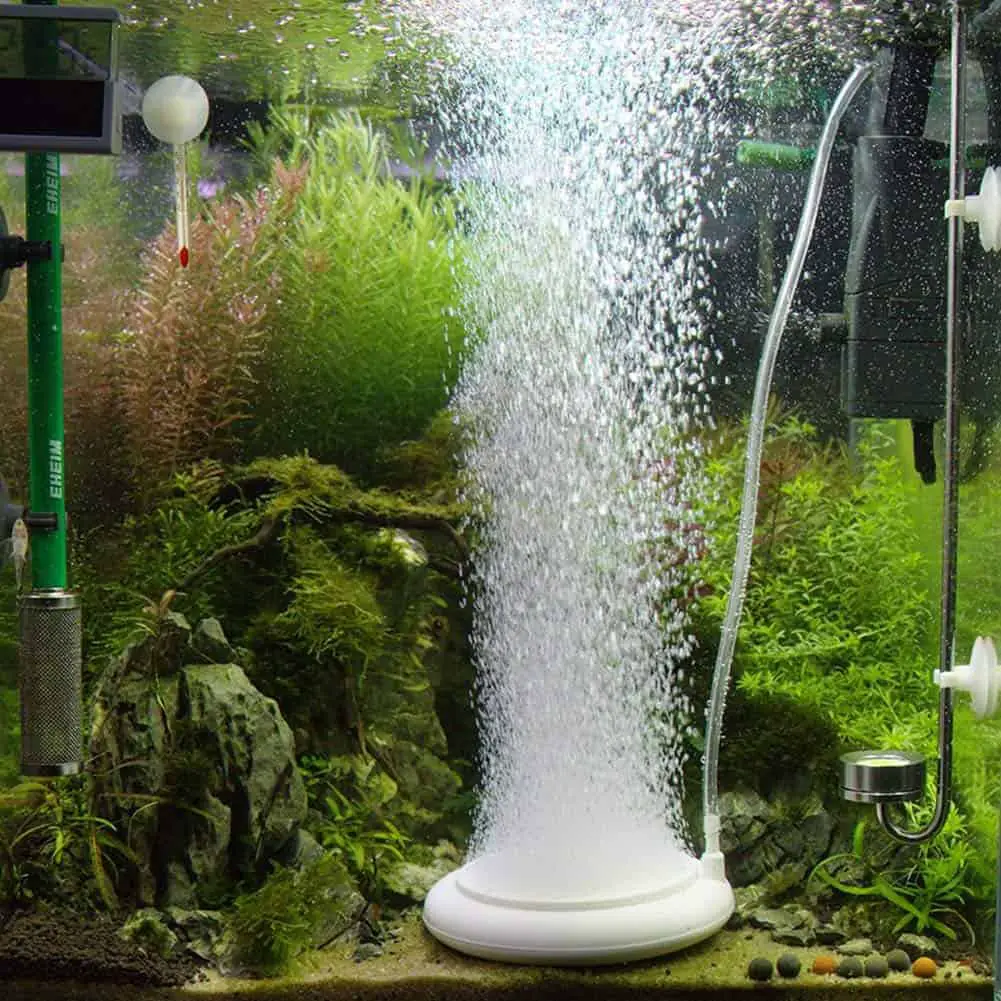
Diffuser Details:
Dimension: 2″ / 5.1cm (D x H). Flow volume: 1 L/min.
4″ / 10.2cm (D x H). Flow volume: 3 L/min
How To Setup Aquarium Air Stone
There are many sizes of an air pump, once you’ve decided which size is appropriate for your needs, you will need some vinyl hose and it’s a good idea to pick up a check valve as well. If the pump is lower than the water level of the aquarium, and the power goes out, water can siphon from the aquarium into the pump.
So a check valve will prevent that from happening. The check valve goes just after the pump and makes certain it goes the right direction. They only go one way obviously to keep the water from flowing backward, so you just want to make certain that you can blow through it once you have it set up. At the other end, you can put a bubble stone, or if you’re using it for multiple tanks or other applications you can run it into a gang valve.
This will split the air and send it several different directions. These are often used if you’re using your air pump for under gravel filters. once you have it all together, just slips right on the end of the pump, we plug the pump in, and we can drop in our air stone.
How to Clean Aquarium Air Stone?
- Wash the air stone in clean water, and then gently remove any excess build-up of the outside. Let the airstone to dry completely for 15 minutes.
- Boil the airstone in clean water for 15 minutes, and allow it to dry again.
- immerse the airstone in a solution of 1 part of bleach to 3 parts clean water for 12 hours. Bleach has the power of both cleaning the air stone and also purifying it. Dip the airstone for another 12 hours, or one day if the air stone was completely clogged. (you can use hydrogen peroxide rather than using bleach).
- Remove the airstone from the bleach solution, and connect an airline from a pump to the airstone and put it in a bucket of clean water, let it run for 10 minutes. This will reduce and eliminate any remaining bleach from the airstone.
- Take the airstone out of the water and let the pump run with the airstone for another 10 minutes to dry the inside holes. Leave the stone to completely dry for about 12 hours, then you can drop it to the aquarium.

Hi, my name is Sean, and I’m the primary writer on the site. I’m blogging mostly about freshwater and saltwater aquariums, fish, invertebrates, and plants. I’m experienced in the fishkeeping hobby for many years. Over the years I have kept many tanks, and have recently begun getting more serious in wanting to become a professional aquarist. All my knowledge comes from experience and reading forums and a lot of informative sites. In pursuit of becoming a professional, I also want to inspire as many people as I can to pick up this hobby and keep the public interest growing.
Read more about Sean.
Please join also my Facebook group.

